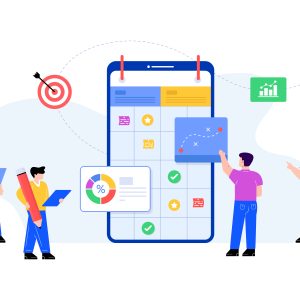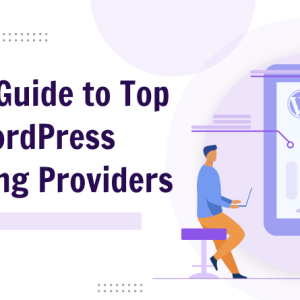The retail business model is ever-changing. From specialty stores, conventional brick to mortar-based buying. Or online shopping, the retail sector has evolved beyond expectations. Especially in the last 7-10 years. The purchasing psychology of humans has changed. It has shifted from need to luxury. Minimalism is also catching up. The arrival of shopping malls is evident. Retail chains have sprung up at every nook and corner of the world’s tier 1 and tier 2 cities. You can find the same Gap t-shirt or a Zara bag in Milan or Mumbai or Bogota. This changing retail model has borrowed from the ‘customers come first’ ideology. This ensures everything that a customer would need is available in one place.
The retail sector has been successful in establishing an emotional connection. The retail businesses plan their sales plan by following the current human sentiment. Technology comes is helpful to elevate this experience. The same technology is why several buyers move to the online space. Thanks to the convenience it brings forth. Online business is not an option for small retail businesses. It is also not lucrative enough.
Small businesses cannot always afford billboard advertising. Or advertising with a message on printed. Or digital media with swanky-looking models. For those, in-store technology seems like the only savior.
Table of Contents
The post-pandemic retail
After COVID-19 hitting the world hard, in-store retail shopping is never going to be the same. To cut the number of people in the store at a time goes against the retail principle. If small businesses have not taken the help of mobile technology yet, there is not a better time for them to do so.
Are you a small business owner in the retail industry? Or someone responsible for elevating the retail sales for a small business? Read on. Here is how mobile technology can help add value to your business.
Streamlining the inventory display
Small retail businesses often do not have floor space as large as their big-box peers. Your customers might underestimate the offerings of your business. To solve the challenges of small spaces is important.
Small businesses can get started with mobile-based POS systems. These systems are placed within the store. And can give information about the inventory. Including everything, the store could offer in the form of digital product listings.
For example, let us take the dresses section of the store. The store can display a collection of different styles of dresses in a single standard size. Then, they can place an mPOS system that displays the other sizes available with the store. This inventory can be kept away in the warehouse. It can be obtained whenever the customer demands. Doing so can ensure that the customer knows what you offer as a store. You can furnish the product within minutes without having a large inventory space.
The POS system is an Android-based display screen. It can be used to display other items the store offers. For example, last season’s items. Or pieces that no longer deserve the front seat but yet could drag in potential buyers.
In the post-pandemic world, human contact has to be reduced. These POS displays can be an alternative to the retail usher. Who helps customers find the product they are looking for, with a small investment.
These POS systems are powered by easy-to-acquire retail software. These devices or systems are managed using a mobile device management system. This system can help to engage customers and cut floor-space. This can also ensure device misuse by customers or employees is avoided. The POS system can run the application or website of your choice. No other app or website can be accessed using the same.
Easy bill payments and checkouts
Today’s customer is in the rush. Having quick bill payments and fast checkouts is essential. For a small retail business store, employing a huge staff is not workable. be it at the checkout counter for quick scanning. Or at the billing counter, and packaging the purchased goods is not workable. Making use of mobile technology can help. Self-service or self-checkout billing kiosks are placed at the exit for customers. Customers who would rather scan their items and pay using a credit card or mobile wallets, which are on the rise. No one wants to wait in a long line! The scan and go model works great in areas where mobile wallet adoption is high and for consumers who are on the go.
The use of mobile wallets is another way for a quick checkout. The bill is paid to the exact amount. A digital copy of the bill is sent to the customer. The transaction is super fast and contact-less!
Maintaining personalization
Retail across the globe is changing because of the changing psyche of the customers. Customers are not comfortable with wearing what their neighbor or co-worker is wearing. They want some level of personalization with the items they buy. It can be apparel, groceries, or even essentials like pharmaceuticals. Small businesses do not have large monitoring systems. Or websites to gauge the customer’s interest. They cannot grab customer eyeballs with fancy newsletters.
Small businesses can use mobile technology to collect small datasets for their customers. This can help to understand their preferences and choices. And not about the product but also about the way they shop- with an usher. Do they prefer with or without mobile wallets? Do they prefer faster checkouts with self-service kiosks? This can be helpful to create a personalized shopping experience for every customer. No matter who walks into your small retail store. Remember, customers will always remember how they were treated. And how their overall experience was. Whether they found the product they were looking for!
Closing lines…
The retail business model is reinventing itself. The businesses are going to the ‘new-normal’ mode of operations globally. These are some key takeaways for small retail businesses.
Also Read: What Is 5G Technology? Why You Can Get the Most Out of Your Phone





